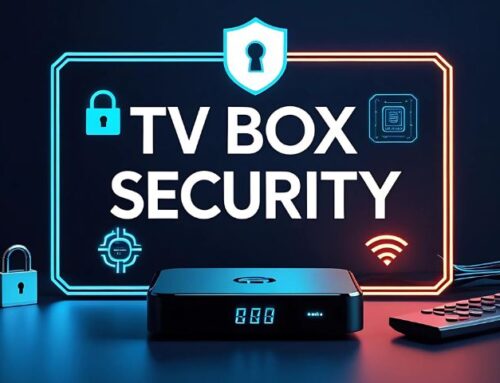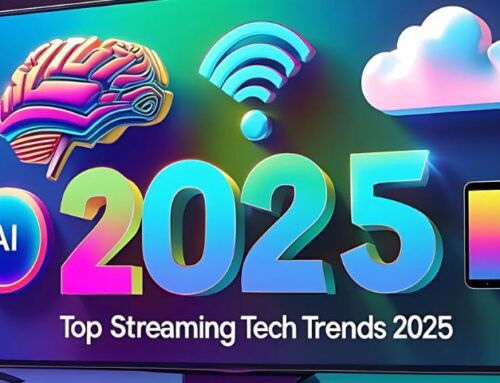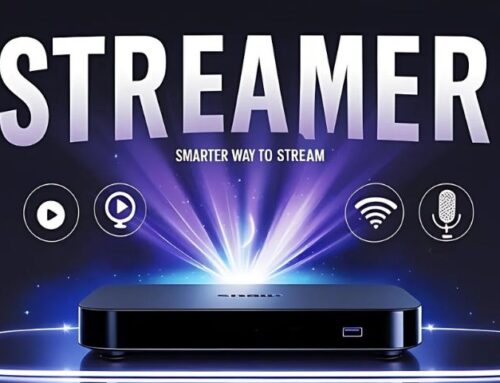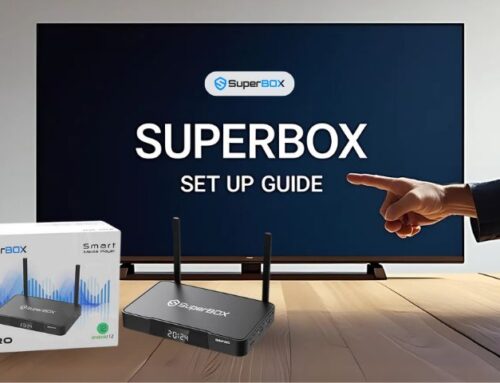Recognizing the significance of cord-cutter news is paramount, given its rapid expansion. According to eMarketer, by 2026, the count of cord-cutting households in the US is projected to soar to a staggering 80 million. Staying abreast of developments in cord-cutting enables the identification of potential business opportunities. For instance, a surge in cord-cutting may signify a demand for specific features in streaming services or Android TV boxes, such as enhanced live TV streaming capabilities or seamless integration with popular apps. By adapting product offerings and refining marketing strategies to cater to this burgeoning segment, businesses can position themselves advantageously in the market landscape. It’s essential to remain informed to capitalize on emerging trends and meet evolving consumer needs effectively.
Current Trends in Cord Cutter News
Key Statistics and Data
The decline in cable and satellite TV use, from 76% in 2015 to 56% in 2021, reflects a significant shift in consumer behavior. This 20% drop signals a clear preference for alternative content platforms like streaming services. Consequently, more people like flexible and cost-effective streaming options over traditional pay-TV services.
Additionally, with nearly 27% of households planning to disconnect from cable or satellite TV by the end of 2021, the trend of cord-cutters is accelerating. This planned shift underscores a growing preference for streaming services among consumers. It suggests a broader societal move away from the limitations of traditional pay TV towards the convenience and variety offered by streaming platforms.
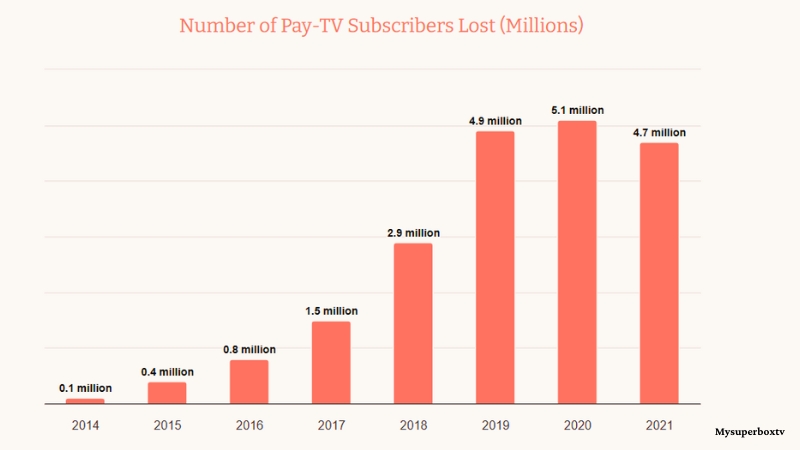
The shift towards cord-cutting accelerated dramatically in 2021, doubling the rate from 15% in 2020 to 27%. This surge happened because of more streaming services and changing viewer habits, possibly influenced by the pandemic. With such a swift change, traditional cable and satellite providers face a daunting challenge.
In 2021 alone, pay-TV services saw a staggering loss of about 4.7 million subscribers, marking a significant blow to the industry. This mass exodus underscores the declining appeal of conventional TV subscriptions. Cable and satellite companies must now reassess their strategies to cope with this market shift, potentially prompting fundamental changes in their business models.
Cord-Cutter Trends
The world loves watching online videos! About 90% of people do it. That means digital streaming is super popular for entertainment. But here’s the twist: 64% plan to stop paying for streaming. Why? Well, folks want flexibility and good deals. And get this: almost half of Gen Z and Millennials are ready to quit their subscriptions. Why? They want shows made just for them. Also, 40% might leave if they don’t find what they like. Imagine canceling just because you couldn’t find your favorite show! So, platforms pick diverse and exciting shows to keep us hooked. That’s the key to keeping subscribers happy and sticking around.
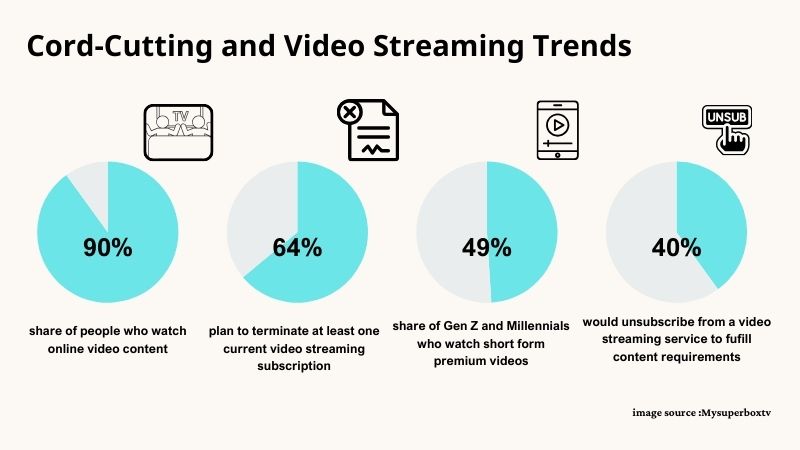
Impact of COVID-19 on Cord Cutting
The COVID-19 pandemic has led to a surge in online video consumption globally. People globally now spend up to 6 hours daily watching online content, marking a significant shift in viewing habits. In particular, Disney+ saw a surge in popularity during lockdowns, with 68% of consumers increasing their usage. This uptick highlights a rising demand for family-friendly entertainment options amid challenging times.
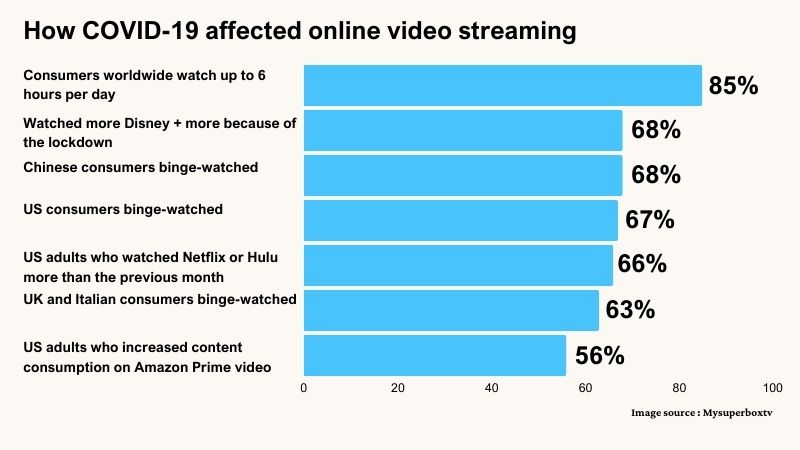
Moreover, regional trends reveal distinct patterns in streaming habits. In China, 68% of consumers turned to binge-watching, showcasing the widespread adoption of streaming services in the country. Similarly, in the US, platforms like Netflix and Hulu saw a 67% increase in viewership, while Amazon Prime Video witnessed a 56% surge. These statistics illustrate the transformative impact of the pandemic on media consumption, highlighting both platform-specific preferences and regional variations in viewing behavior.
Additionally, Superbox has been highly praised by many experts for its consistent development during the Covid-19 pandemic. According to feedback from users and retail partners, they are very satisfied and comfortable when cooperating with and using Superbox products.
Cord Cutter News: Market Analysis
Top video streaming apps in USA
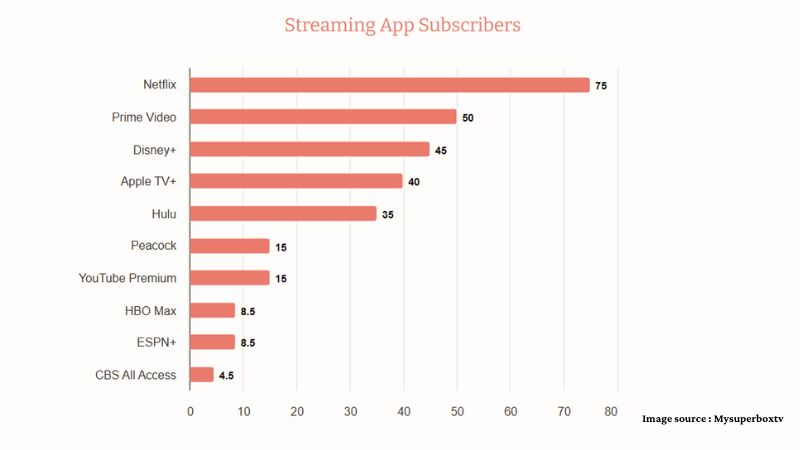
The statistics on cord-cutters highlight a significant trend in the U.S. media landscape. Notably, 39% of those who have never subscribed to satellite or cable TV represent a sizable portion of adults. Statistic suggests a shift in viewing habits, with more individuals opting out of traditional TV services. Additionally, 27% of U.S. adults are genuine cord-cutters who have terminated their cable or satellite services, indicating a growing preference for alternative streaming platforms.
Moreover, the rise of subscription-based streaming services like Netflix, Amazon Prime, and Hulu has reshaped how households consume content. A staggering 78% of U.S. households now maintain subscriptions to these platforms, showcasing their widespread popularity. Furthermore, the increasing number of households subscribing to multiple platforms, from 43% in 2018 to 55% in 2020, underscores the diversification of viewing options. With an expected jump of 475 million subscriptions between 2021 and 2027, the dominance of streaming services prepares to continue its meteoric rise.
Comparative Analysis: Cable TV vs. Streaming Services
Streaming services, capturing 30.4% of TV viewership, signify a significant shift in consumer preferences. This trend reflects a growing desire for on-demand and personalized content. Users now seek flexibility and choice in what they watch, leading them away from traditional cable subscriptions. With streaming, viewers can access content anytime, anywhere, catering to modern lifestyles. This surge in streaming popularity marks a clear departure from traditional viewing habits, signaling a new era in entertainment consumption.
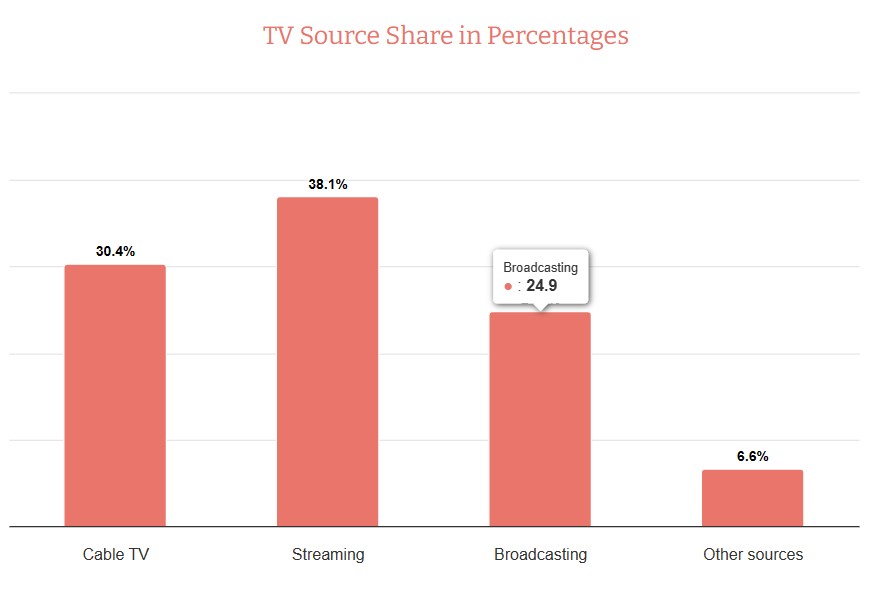
However, cable TV maintains dominance, claiming 38.1% of the audience. Besides, this enduring appeal is evident, particularly among older demographics and regions with limited internet access. Despite the rise of streaming, cable TV’s reliability and familiarity still resonate with many viewers. For these individuals, cable remains a staple source of entertainment, providing a wide array of channels and programming. Its continued prevalence underscores the enduring legacy of traditional television in today’s digital age.
Cord Cutter News: Consumer Preferences and Behavior
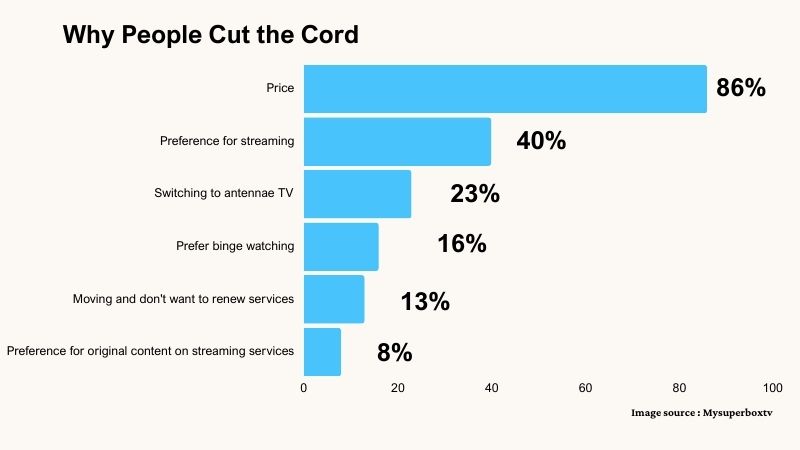
Consumer behavior indicates a strong inclination towards cord-cutting due to high cable costs, with 86% citing price as the primary reason. Similarly, consumers seek more budget-friendly entertainment alternatives. Transitioning towards streaming services, 40% of viewers favor the flexibility and convenience they offer, providing on-demand content, personalized suggestions, and multi-device access.
Moreover, 23% prefer antennae TV for local broadcasts, especially for local news, sports, and free-to-air programs. Additionally, 16% of consumers are attracted to binge-watching, enjoying the freedom to watch at their own pace. Furthermore, 13% are driven by relocation, avoiding the hassle of setting up new services. Lastly, 8% prefer streaming platforms for their original content, such as Netflix, Hulu, and Disney+, showcasing a growing preference for exclusive shows.
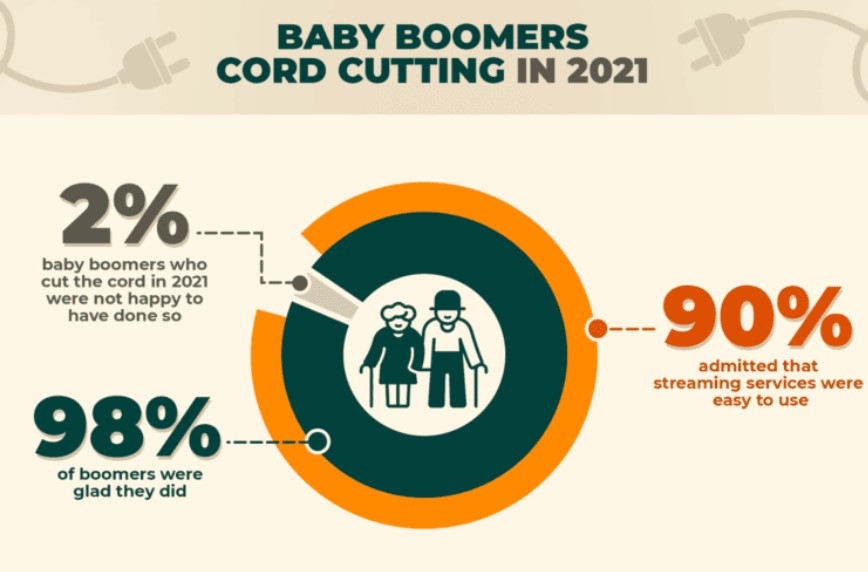
Consumer Preferences and Behavior illuminate the joy of cord-cutting among Baby Boomers. With 98% expressing satisfaction, it’s evident that abandoning traditional cable services brings them happiness. 98% suggest a positive shift in their viewing habits.
Moreover, the study reveals that streaming services are incredibly user-friendly for older generations. With 90% finding them easy to navigate, accessibility is apparent. Furthermore, the statistic indicates a seamless transition from cable to streaming, enhancing the overall viewing experience for Baby Boomers.
Cord Cutter News: Growth Forecast
The number of cord-cutting households in the US will reach 72% by 2025. The number marks a shift from traditional cable and satellite TV subscriptions. People are moving towards streaming services because they offer more flexibility and lower costs. Moreover, the convenience of watching shows anytime, anywhere, is also a big draw. As more households cut the cord, the trend away from pay TV is becoming clear.
Pay TV subscriptions are expected to keep falling, with a 16% decline in 2025. The statistic shows the rising popularity of streaming services. As well as viewers opt for platforms like Netflix and Hulu, pay TV providers are losing customers. However, TV access providers with broadband services can still benefit. They can bundle internet and streaming deals to attract users. This strategy helps them stay relevant in a changing market.
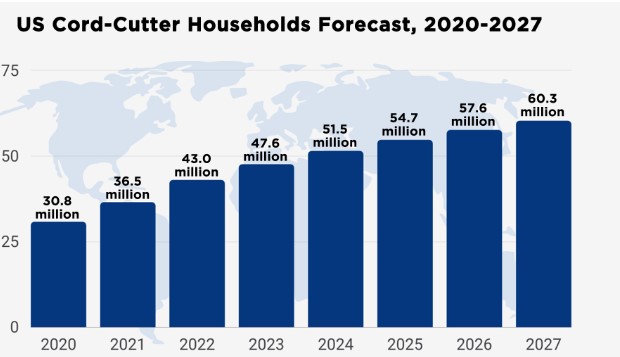
Cord-cutting in the US is picking up speed. More and more households are ditching cable and satellite TV subscriptions. The numbers tell the story: from 2020 to 2027, cord-cutter households will rise from 54.7 million to 75 million. That’s a steady increase of 5.3% every year. By 2025, around 72% of US households are projected to have cut the cord. This trend shows no signs of slowing down. It’s a clear shift in how people consume entertainment. Streaming services are taking over, offering more flexibility and variety. Traditional TV providers are feeling the pressure. As technology advances, so do people’s preferences. They want convenience and choice, and cord-cutting gives them just that. Lastly, as we move forward, expect to see even more households joining the cord-cutting revolution.
Conclusion
In conclusion, the trajectory of cord-cutter news is undeniably shaping the future of entertainment consumption. As we delve into the dynamic landscape of streaming services and digital media, it’s evident that the era of traditional cable TV is giving way to a new paradigm. With an ever-expanding array of options and evolving consumer preferences, the prospects for cord-cutting in 2024 and beyond are promising. However, amidst the growth opportunities lie challenges and uncertainties, underscoring the need for continuous adaptation and innovation. As we navigate this transformative journey, one thing remains clear: Cord-cutting isn’t just a trend; it’s a fundamental shift in how we experience and engage with content.


